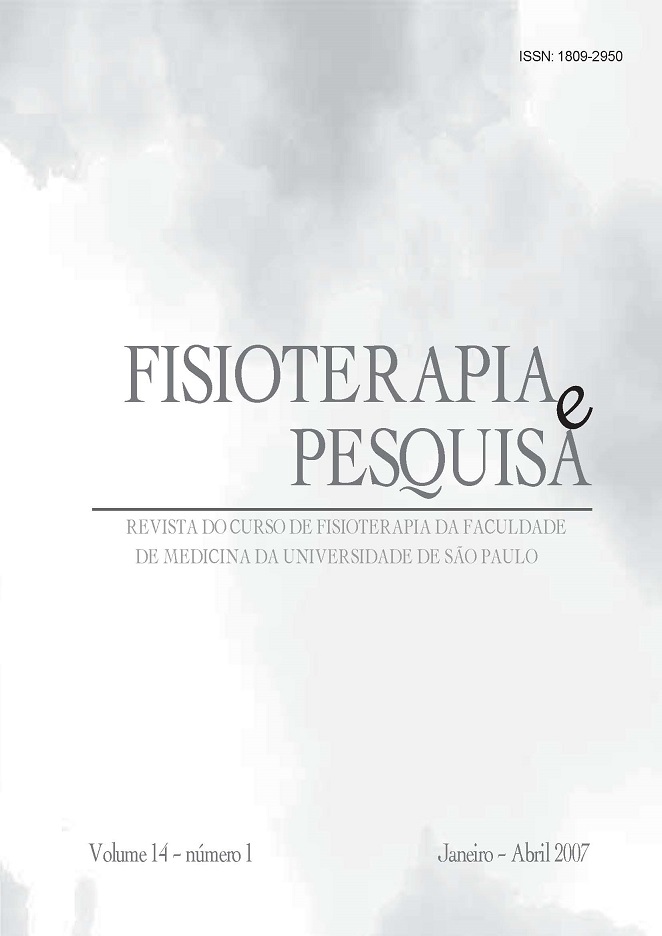Association of positive end expiratory pressure to ultrasonic nebulizer: effect on aerosol deposition onto lungsThis study aimed at comparing aerosol deposition onto lungs using an ultrasonic (US) nebulizer, with and without using a positive end expirator
DOI:
https://doi.org/10.1590/fpusp.v14i1.75502Keywords:
aerosols, lung/radionuclide imaging, nebulizers and vaporizers, positive pressure respiration.Abstract
This study aimed at comparing aerosol deposition onto lungs using an ultrasonic (US) nebulizer, with and without using a positive end expiratorypressure (PEEP) valve, also comparing two valve pressures, 5 cmH2O and 10 cmH2O. Twelve young healthy volunteers were submitted to Tc99m
radioaerosol inhalation generated by US nebulizer in three stages: without
PEEP (control) and with PEEP of 5 cmH2O and of 10 cmH2O. In order to
analyse aerosol deposition, regions of interest (ROI) were outlined in both
lungs, each subdivided into central, intermediate, and peripheral regions;
the number of Tc99m deposited particles was counted in each ROI. Data
were statistically analysed. Aerosol deposition was higher when using the
PEEP valve attached to the nebulizer. In both lungs, deposition when using
PEEP was higher in central (p=0,012) and intermediate (p=0,01) regions. In the peripheral regions a difference was found between lungs. Comparison between pressure levels did not show any statistical significance. Data suggest that the use of PEEP valve associated to US nebulizer may increase aerosol deposition, thus improving therapeutic inhalation.
Downloads
Download data is not yet available.
Downloads
Published
2007-04-30
Issue
Section
Original Research
How to Cite
Association of positive end expiratory pressure to ultrasonic nebulizer: effect on aerosol deposition onto lungsThis study aimed at comparing aerosol deposition onto lungs using an ultrasonic (US) nebulizer, with and without using a positive end expirator. (2007). Fisioterapia E Pesquisa, 14(1), 29-35. https://doi.org/10.1590/fpusp.v14i1.75502



